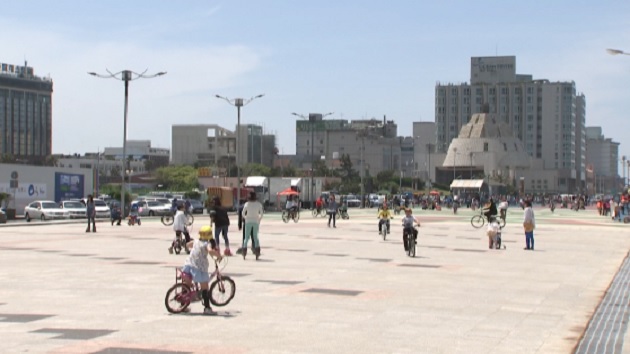
This week on Jeju: A to Z, Todd Thacker takes a brief look at a neighborhood on the city’s north shore called Tapdong. As we’ll see now, it has benefited from a cultural and financial revival in recent years.
Of all the areas of Jeju City familiar to residents and travelers alike, it’s an older district on the north coast and east of Jeju International Airport that dominates the city.
[Slug CG]
Tapdong has long been a hub of village life and commerce
Tapdong has a long history as a hub of village life and commerce. As Jeju grew into a full-fledged city in the 20th century, businesses came and went ? many relocating to other areas. But certainly in the last decade or so, it has enjoyed the benefits of its financial and cultural renaissance.
[Slug CG]
Central area for shopping, food, and accommodations
It is the site of a number of large-scale, brand-name hotels. Mom-and-pop stores mix in with major shopping outlets and an extensive underground shopping mall.
And then there are well-established large traditional markets. Dongmun Market, for example, is where the freshest seafood and produce can be found at great prices.
[Slug CG]
New facilities promoting culture and history
Tapdong is also a main venue for the celebrated Tamna Cultural Festival, the Kim Man-deok Memorial Hall and Arario Museum, which have succeeded in accentuating the history and artistic spirit of the area. The open-air Jeju Seaside Concert Hall is also a center for music and dramatic performances.
Jeju Port is a major landmark, serving both Jeju’s substantial ferry and container ship traffic, as well as the thousands of domestic and international cruise ship visitors who arrive daily.
[Slug CG]
Todd Thacker
And finally, there’s the nearly 2 kilometers of coastal boardwalk and breakwater along which couples and families like to stroll. You’ll find basketball courts, bike rentals and plenty of space to take advantage of. Tapdong really does have something for everyone.
Todd Thacker KCTV





